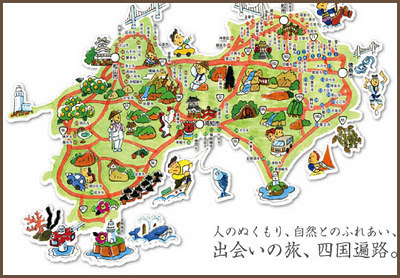LINK
http://japanshrinestemples.blogspot.jp/2014/09/kure-hachimangu-tosa.html
:::::::::::::::::::::::::::::::::::::::::::::::::::::::::::::::::::::::::::::::::::::::::::::::::::::::::::::::::::::::::::::::::::::::::::::::::::::::::::::::::::::::::::::::::::::
Kure Hachimangu 久礼八幡宮
高知県高岡郡中土佐町 - Takaoka, Nakatosa

- source and more photos : japan-web-magazine.com - kure-hachimangu
..............................................................................................................................................
In this shrine the deity of the sea is venerated in the hope for a good catch, especially katsuo Bonito.


source : facebook
Ema votive tablets of the famous katsuo bonito and the sashimi speciality of Tosa.

- source and more photos : hiru-ne.jugem.jp
. katsuo 鰹 bonito, skipjack tuna .
Katsuwonus pelamis
- Deities in residence
応神天皇 - Emperor Oojin Tennoo
神功皇后 - Empress Jingo Kogo
比売神 - Hime no Kami
This shrine has been destroyed in 1707 by a great tsunami after the 宝永地震 Hoei earthquake.
The present structure has been built in 1825.
..............................................................................................................................................
- quote
The Grand Festival held in September every year at Kure Hachimangu Shrine in Nakatosa Town is one of the three largest festivals in Kochi Prefecture. It's a traditional Shinto event, in which Japanese sake and rice cake made of newly harvested rice plant are dedicated to the Hachiman god in appreciation for the rich harvest in fall.
The festival dates back to the Warring States period (1493-1573), when the villagers in this area, who had been suffering from famine, had a thanksgiving festival because their prayer for a good harvest was answered by the god.

This is a festival of valiant fishermen. At 2:00 AM on the festival day, the parade of people carrying the big straw torch called "Omikoku-san" with a length of 6 meter and weight of about 1 ton starts from the festival leader's house called "Toya" and go through the town to the shrine, where it is set on fire. The accompanying drums are hit against each other on the way, which is called "Kenka-Daiko (Drums' Fight)." In the afternoon, the "Onabare" dance is danced to entertain the god, who has taken a short excursion to the beach.
On the first day of the festival, the front approach is lined with a lot of night stalls and the fireworks display is held at night. The precinct is crowded with townspeople and tourists including those from outside the prefecture.
- source : nippon-kichi.jp
.......................................................................
- quote
The Kure Hachimangu Shrine Grand Festival
is taking place from the 14th to the 15th of the 8th month in the lunar calendar and is one of the three major festivals of Kochi.

The festival has been held since the Period of Warring States in Japan (16th century). The highlight of the festival is a magnificent procession called "Omikoku-san" where local men march through the night towards the shrine while carrying a large, 6-meter-high torch weighing about 1 ton.
- source : tosawave.blogspot.jp/2011
..............................................................................................................................................
. ema 絵馬 votive tablets .
. Hachiman Shrines in Japan 八幡宮 .
:::::::::::::::::::::::::::::::::::::::::::::::::::::::::::::::::::::::::::::::::::::::::::::::::::::::::::::::::::::::::::::::::::::::::::::::::::::::::::::::::::::::::::::::::::::
- Reference : 久礼八幡宮
- Reference : English
. Shrine, Shinto Shrine (jinja 神社) - Introduction .
:::::::::::::::::::::::::::::::::::::::::::::::::::::::::::::::::::::::::::::::::::::::::::::::::::::::::::::::::::::::::::::::::::::::::::::::::::::::::::::::::::::::::::::::::::::
[ . BACK to DARUMA MUSEUM TOP . ]
[ . BACK to WORLDKIGO . TOP . ]
:::::::::::::::::::::::::::::::::::::::::::::::::::::::::::::::::::::::::::::::::::::::::::::::::::::::::::::::::::::::::::::::::::::::::::::::::::::::::::::::::::::::::::::::::::::
http://japanshrinestemples.blogspot.jp/2014/09/kure-hachimangu-tosa.html
:::::::::::::::::::::::::::::::::::::::::::::::::::::::::::::::::::::::::::::::::::::::::::::::::::::::::::::::::::::::::::::::::::::::::::::::::::::::::::::::::::::::::::::::::::::
Kure Hachimangu 久礼八幡宮
高知県高岡郡中土佐町 - Takaoka, Nakatosa

- source and more photos : japan-web-magazine.com - kure-hachimangu
..............................................................................................................................................
In this shrine the deity of the sea is venerated in the hope for a good catch, especially katsuo Bonito.


source : facebook
Ema votive tablets of the famous katsuo bonito and the sashimi speciality of Tosa.

- source and more photos : hiru-ne.jugem.jp
. katsuo 鰹 bonito, skipjack tuna .
Katsuwonus pelamis
- Deities in residence
応神天皇 - Emperor Oojin Tennoo
神功皇后 - Empress Jingo Kogo
比売神 - Hime no Kami
This shrine has been destroyed in 1707 by a great tsunami after the 宝永地震 Hoei earthquake.
The present structure has been built in 1825.
..............................................................................................................................................
- quote
The Grand Festival held in September every year at Kure Hachimangu Shrine in Nakatosa Town is one of the three largest festivals in Kochi Prefecture. It's a traditional Shinto event, in which Japanese sake and rice cake made of newly harvested rice plant are dedicated to the Hachiman god in appreciation for the rich harvest in fall.
The festival dates back to the Warring States period (1493-1573), when the villagers in this area, who had been suffering from famine, had a thanksgiving festival because their prayer for a good harvest was answered by the god.

This is a festival of valiant fishermen. At 2:00 AM on the festival day, the parade of people carrying the big straw torch called "Omikoku-san" with a length of 6 meter and weight of about 1 ton starts from the festival leader's house called "Toya" and go through the town to the shrine, where it is set on fire. The accompanying drums are hit against each other on the way, which is called "Kenka-Daiko (Drums' Fight)." In the afternoon, the "Onabare" dance is danced to entertain the god, who has taken a short excursion to the beach.
On the first day of the festival, the front approach is lined with a lot of night stalls and the fireworks display is held at night. The precinct is crowded with townspeople and tourists including those from outside the prefecture.
- source : nippon-kichi.jp
.......................................................................
- quote
The Kure Hachimangu Shrine Grand Festival
is taking place from the 14th to the 15th of the 8th month in the lunar calendar and is one of the three major festivals of Kochi.

The festival has been held since the Period of Warring States in Japan (16th century). The highlight of the festival is a magnificent procession called "Omikoku-san" where local men march through the night towards the shrine while carrying a large, 6-meter-high torch weighing about 1 ton.
- source : tosawave.blogspot.jp/2011
..............................................................................................................................................
. ema 絵馬 votive tablets .
. Hachiman Shrines in Japan 八幡宮 .
:::::::::::::::::::::::::::::::::::::::::::::::::::::::::::::::::::::::::::::::::::::::::::::::::::::::::::::::::::::::::::::::::::::::::::::::::::::::::::::::::::::::::::::::::::::
- Reference : 久礼八幡宮
- Reference : English
. Shrine, Shinto Shrine (jinja 神社) - Introduction .
:::::::::::::::::::::::::::::::::::::::::::::::::::::::::::::::::::::::::::::::::::::::::::::::::::::::::::::::::::::::::::::::::::::::::::::::::::::::::::::::::::::::::::::::::::::
[ . BACK to DARUMA MUSEUM TOP . ]
[ . BACK to WORLDKIGO . TOP . ]
:::::::::::::::::::::::::::::::::::::::::::::::::::::::::::::::::::::::::::::::::::::::::::::::::::::::::::::::::::::::::::::::::::::::::::::::::::::::::::::::::::::::::::::::::::::














































